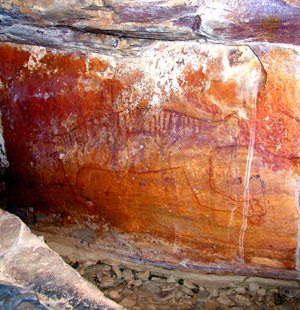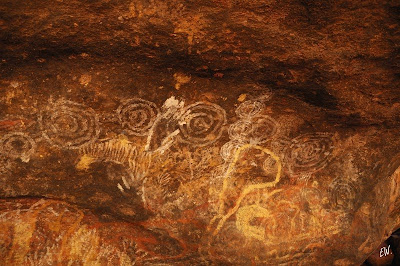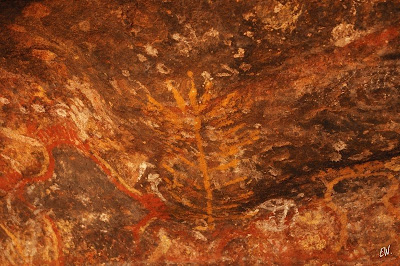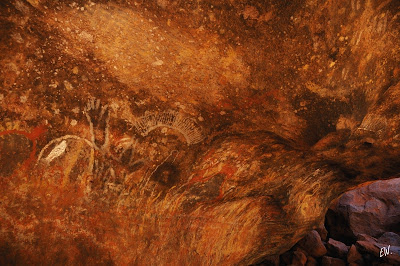
SYDNEY: Ancient rock art depicting the extinct marsupial lion has been found in the Kimberley region of Western Australia, says a study in the journal Antiquity.
The first convincing example of a marsupial lion found in rock art to date, the find suggests that early Australians and marsupial lions co-existed.
It also hints at what marsupial lions may have looked like. Painted in red ochre, the image depicts a large four-legged animal, with a strong, prominent front limb poised for action, protruding claws and stripes running the length of its back.
New look at an old beast
The rock art "adds to our knowledge of the animal's appearance that, without the discovery of a mummified animal, would have remained conjecture," says the study. "The artist has depicted a tail with tufted tip, the ears are pointed rather than rounded [and] the animal is striped, rather than spotted."
The marsupial lion (Thylacoleo carnifex) is well known from the fossil record. Near complete skeletons have been known since the 1960s and the first complete skeleton was unearthed in 2002 in a Nullarbor Plain cave by researchers from the Western Australian Museum. From these finds scientists know that Thylacoleo was front heavy, with large, strong forelimbs. They also had vicious claws and razor-sharp teeth, making them ferocious predators.
However, as the species has been extinct for tens of thousands of years (some estimates suggest 30,000 years, but direct dating of the fossils has not been completed), experts don't know exactly what they looked like. They're also unsure what drove them extinct and even if they were still around when the first Aborigines arrived on the continent.
Some evidence suggests climate change was to blame, whilst other evidence points to early Australians burning the land and altering the habitat.
Lion or tiger?
Tour guide and amateur archaeologist Tim Willing found the painting while exploring rock art near the northwestern Kimberley coast in June 2008. He took digital images of the painting and then, along with co-author Kim Akerman, published a description of them in Antiquity earlier this year.
Many Australian cave paintings have been found to depict the Tasmanian tiger or thylacine, which is known to have persisted on the mainland until around 3,000 years ago. However, the newly discovered painting has several features that set it apart from others thought to depict thylacines.
The stripes of the animal in the painting are more extensive than those of a thylacine, which cover only the animal's rear end. The creature also appears to have cat-like claws, a feature of Thylacoleo. Furthermore, the muzzle is blunt, not long and tapered like a Tasmanian tiger's.
"Compared with the powerful forequarters, the hindquarters appear underdeveloped," write the authors. "This apparent asymmetry is not seen in rock art images of thylacines, where both hind- and forelimbs are usually of similar dimensions. However thylacoleos were equipped with powerful claws on the hind limbs and these appear to be depicted in this image."
The discovery suggests that early Aborigines and marsupial lions were contemporaries, and may also lend weight to the idea that the arrival of people contributed to the demise of the species.
Unanswered question
Australian palaeontologists John Long, of Museum Victoria in Melbourne, and Rod Wells, of Flinders University in South Australia, both agree that the animal pictured is likely to be Thylacoleo.
"I think there is a remarkable resemblance between the painting and [a] skeleton I have reconstructed myself," said Wells.
However, Steven Wroe, a palaeontologist from the University of New South Wales in Sydney, isn't convinced. Whilst conceding that the coexistence of marsupial lions and Australian aboriginals would be exciting, he believes the rock art could still be a representation of a thylacine.
Wroe points out that mainland Tasmanian tigers may have had a different pattern of stripes than the isolated Tasmanian population. "The fact that it has stripes at all, that are in any way similar to the Tasmanian tiger, suggests to me that it is a Tasmanian tiger" he told Cosmos Online.






No comments:
Post a Comment